Ever wondered, 'Why is my cat shedding so much?' Explore surprising facts about cat shedding and learn proactive steps to reduce excessive shedding for a happier, healthier cat.
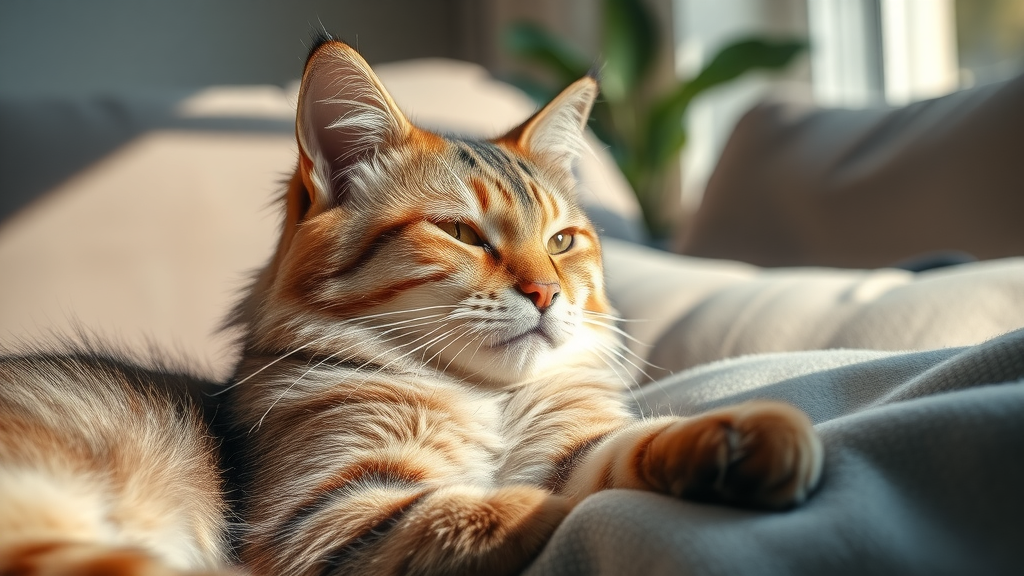
Understanding Why Is My Cat Shedding So Much? The Science of Cat Shedding
Have you ever noticed tufts of cat hair on your couch or found clumps of fur in unexpected places? If you’re asking why is my cat shedding so much , you’re definitely not alone. Shedding is a natural process in cats, but when it seems excessive, it can be a cause for concern for pet parents. The good news is that most shedding is perfectly normal, and understanding the reasons behind it can help you take the right steps to manage your cat’s coat and skin health.
Cats shed old or dead hair to make room for new growth. This process not only keeps their fur soft and clean but also regulates body temperature and helps distribute natural oils for a glossy coat. However, the amount a cat sheds can vary depending on genetics, breed, age, environment, and even stress levels. Knowing what’s typical for different cat breeds and seasons will help you determine if your cat shedding is normal or a sign of a potential health issue.
Decoding Cat Hair Loss: Shedding in Cats vs. Hair Loss Conditions
Not all fur loss in cats is the same. Shedding in cats is a controlled process that removes dead hair , making way for a soft, healthy coat. However, abnormal hair loss , such as sudden bald spots or a bald patch , may indicate medical conditions like ringworm, allergies, or hormonal imbalances. While cats shed to maintain optimal coat and skin health, distinguish between normal cycles and excessive, patchy fur loss. Smooth, distributed loss is typically normal, while isolated or inflamed bald spots require attention.
If you spot more hair than usual around the house or notice your cat is shedding in chunks (especially with red or irritated skin), monitor closely. Common causes of excessive cat hair loss include parasites, fungal infections, dietary deficiencies, and stress. Timely intervention ensures your cat gets the care needed while preventing excessive cat shedding from escalating into a serious problem.
What Makes Cats Shed More? Key Drivers Behind Cat Shedding
While all cats shed , certain factors can trigger episodes of increased shedding. Changing seasons, diet, stress, underlying health issues , and household environmental changes (like artificial lighting or temperature shifts) all play a role. For instance, in the spring and fall, cats often lose their winter coat as their bodies adjust to daylight and temperature.
Nutrition also significantly impacts cat shedding. Cats on low-quality cat food may lack essential nutrients, making them shed a lot more. Additionally, emotional stress—caused by moves, new pets, or changes to the household—can lead to more fur loss. Monitoring your cat’s environment and well-being helps prevent unnecessary, excessive shedding.

Shedding Is Normal: Recognizing Healthy Cat Shedding Patterns
For most cat owners, the sight of stray hairs around the house isn’t unusual. In fact, shedding is normal and a sign that your cat’s body is functioning just as it should. Regular cycles keep their coats free of dead hair and maintain healthy skin. Indoor cats may shed consistently throughout the year, while outdoor cats display more defined seasonal patterns.
What you should look for is the pattern and amount of fur loss. Smooth, even shedding, especially during seasonal changes, is typical. If your cat’s fur feels soft and you don’t spot bald patches or inflamed skin, you’re likely seeing the healthy version of cat shedding.
Seasonal and Increased Shedding in Cats: When to Expect It
Most cats shed the most during spring and fall, when days get longer or shorter, prompting their bodies to shed the heavier winter coat and prepare for temperature swings. Seasonal shedding is influenced by changes in sunlight (even artificial lighting in homes) and temperature, so it isn’t exclusive to outdoor cats. Expect to find more fur around your house, especially during these peak months as your cat transitions between winter and summer coats.
With indoor cats sheds , the cycles can occur more unpredictably because heating, AC, and lighting keep their environment steady. Such cats may not have a dramatic shed-all-at-once phase but will instead lose hair steadily. Being aware of these natural cycles makes it easier to take action only when shedding seems truly excessive.
How Different Cat Breeds Shed: Long-Haired vs. Short-Haired Cats
Not all cats are created equal when it comes to shedding. Long-haired cat breeds , such as Maine Coons or Persians, have more fur to lose and may appear to shed more simply due to the length and density of their coats. Short-haired cats , like American Shorthairs or Siamese, also shed, but the shorter length makes it less noticeable.
Some cat breeds are notorious for fur loss, while others shed very little. Recognizing your cat’s genetic and breed-specific shedding tendencies helps set realistic expectations. Regardless of breed, regular grooming reduces loose hair and supports healthy coat and skin , further lowering the odds of excessive shedding.
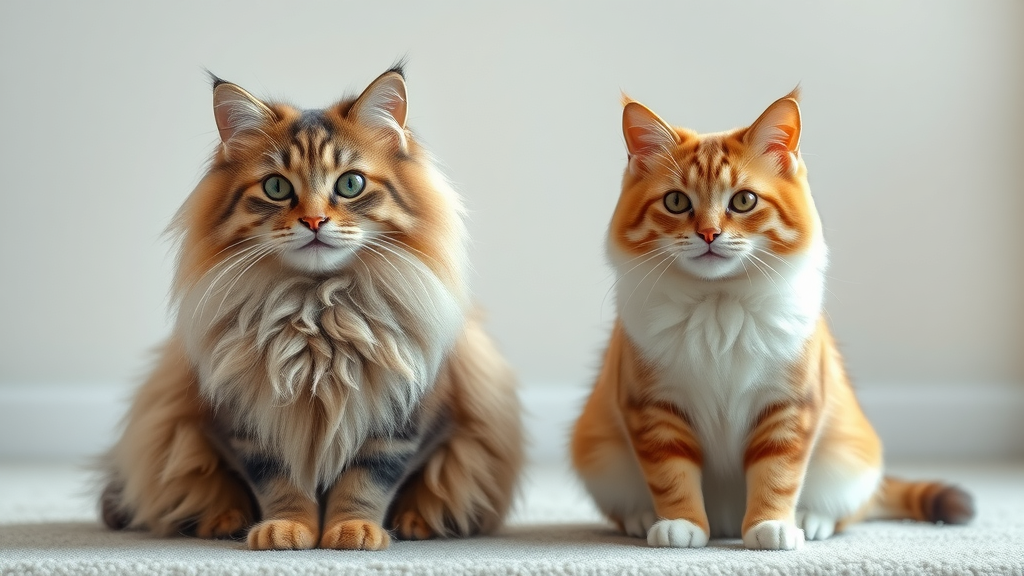
Excessive Shedding: Warning Signs That Your Cat Is Shedding Too Much
While shedding is a natural process , there are times when it can signal an underlying issue. Excessive shedding goes beyond the regular molt—it may indicate problems with your cat’s overall health, diet, or stress level. Recognizing when your cat shedding turns problematic is crucial for your pet’s wellness.
Red flags include sudden increases in fur loss, persistent bald or thinning patches, sore or scabby skin, or behavior changes like excessive licking or scratching. If you spot these, it’s time to dig deeper into what might be causing your cat’s hair loss.
When Shedding Indicates a Health Issue in Cats
Excessive shedding can be one of the first signs of an underlying medical issue. Causes include parasites such as fleas or mites, allergies (to cat food or the environment), hormonal imbalances like hyperthyroidism, or fungal infections such as ringworm. Stress, anxiety, and sudden changes at home can also manifest as fur loss in your cat.
Watch for additional symptoms such as poor appetite, changes in weight, lethargy, incessant scratching, or the appearance of red, inflamed skin and sores. These signs suggest it’s more than a natural molt—seeking veterinary evaluation ensures prompt management of a potential health issue.
If your cat is shedding excessively and has bald spots, a vet can rule out both medical and nutritional factors. Timely action makes all the difference in supporting your cat’s comfort and overall health.
How to Identify Unusual Cat Hair Loss and Excessive Cat Shedding
Differentiating between normal and abnormal shedding starts with a careful look at your cat’s coat. Is the loss even? Are there bald patches or broken skin? Do you notice more fur clumps than usual without any seasonal trigger? Documenting when and how your cat sheds can help you and your vet determine if it’s normal seasonal cat shedding or something requiring intervention.
Grooming time is a perfect opportunity to check your cat’s skin. Smooth, unbroken fur—even if there’s a lot of it—likely means all is well. Patchy fur, hair thinner in certain areas, or visible scabs raise concerns. Knowing your cat’s baseline makes it easier to spot early signs of excessive shedding or hair loss due to a medical issue.
Indicator |
Normal Shedding |
Excessive Shedding |
Hair Loss/Medical Issue |
|---|---|---|---|
Shedding Pattern |
Even, seasonal or steady throughout the year |
Large fur clumps, throughout the year, not just seasonally |
Patchy, sudden loss, bald spots |
Skin Health |
Healthy, unbroken, soft |
Possible minor irritation, dryness |
Redness, sores, lumps, infections |
Behavior |
Grooms normally |
Increased licking or scratching |
Obsessive licking, visible distress |
Other Symptoms |
None |
Some itching or minor discomfort |
Loss of appetite, lethargy, weight change |
Top Expert Strategies To Reduce Shedding in Cats
If you’re tired of fur tumbleweeds under your sofa, take charge with proven strategies to reduce shedding. These solutions boost not only cleanliness but also your cat’s health and comfort. Consistency—and understanding your cat’s unique needs—are key.
Expert strategies blend good grooming habits, smart dietary choices, and changes to your cat’s environment. Implementing a holistic approach helps minimize cat hair buildup and makes your house a cleaner, more inviting home for both you and your furry friend.
Optimal Grooming Techniques to Manage Cat Shedding
The cornerstone of a healthy, low-shedding cat coat is regular grooming. Aim for gentle brushing daily—especially during peak seasonal shedding times. Choose a brush type tailored to your cat’s length and cat breed : slicker brushes for long-haired, short-bristled ones for shorthairs. Grooming removes loose hair, spreads natural oils , and also lets you detect early signs of skin or health issues.
Complement brushing with occasional baths, but use cat-safe shampoos to avoid drying out the cat’s skin. Always observe your cat’s reactions—stressful grooming can backfire and lead to more fur loss. Gentle grooming routines not only help reduce shedding but also strengthen the bond between you and your pet.
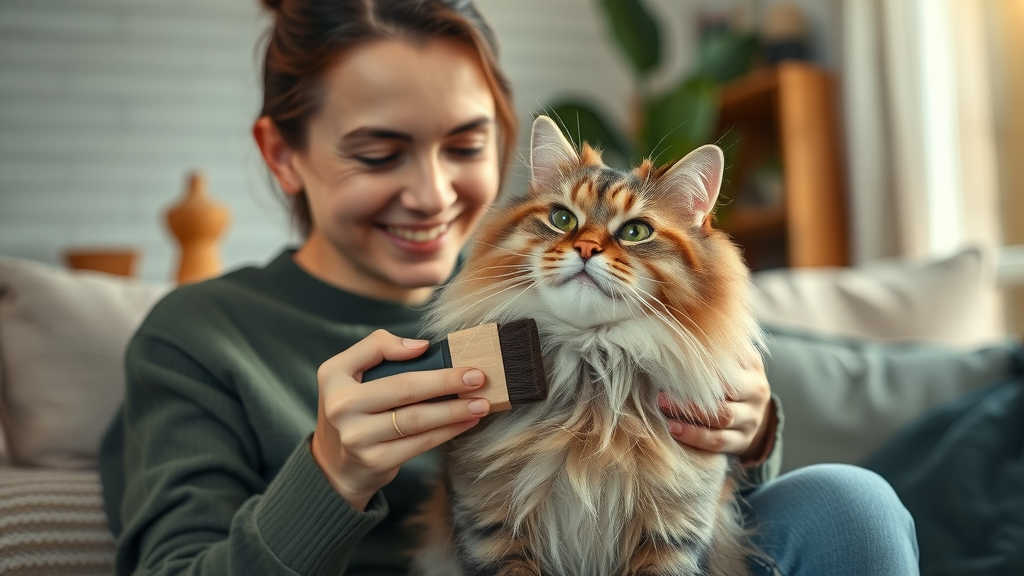
Diet and Nutrition Tips to Reduce Cat Shedding
Diet plays a critical role in your cat’s skin and coat health. Feeding high-quality cat food packed with omega-3 and omega-6 fatty acids supports a shiny, resilient coat and minimizes fur loss. Ensure the food contains enough animal protein, as well as vitamins like A, E, and biotin—all are essential for strong follicles.
Hydration is just as important. Make sure your cat always has access to fresh water. If your cat suffers from food allergies or digestive issues, working with your vet to tailor a specific diet helps reduce shedding and ward off pesky hair loss problems.
Environmental Factors That Can Increase Shedding in Cats
Changes in living conditions can lead to increased shedding. Cats react to stress, abrupt temperature flux, or artificial lighting that alters their biological rhythms. Maintain a stable, comfortable indoor temperature and avoid loud noises or sudden household shifts.
Humidity also matters: too dry an environment makes shedding in cats worse, while too much dampness can invite skin infections. Use humidifiers and air purifiers to keep your home and your cat’s fur in top shape. Comfort and stability keep your cat shedding within healthy bounds.
Should I Be Concerned if My Cat Is Shedding a Lot?
Discover when to speak to a veterinarian about cat shedding and what symptoms require medical attention.
It’s natural to worry when you see your cat shed more than usual. But remember: most cats shed year-round—some breeds just shed a lot! You should be concerned if shedding in cats comes with bald spots, redness, sores, behavior changes, or appears suddenly and dramatically. Seek veterinary care for unexplained hair loss or other concerning symptoms. Early intervention keeps your feline friend comfortable and healthy.
How Do I Stop My Cat From Shedding So Much Fur?
Daily Brushing: Removes dead hair and spreads natural oils for a glossy coat.
Bathing: Occasional baths with cat-safe shampoos keep skin clean and help loosen loose hair.
Upgrade Cat Food: Feed a nutritious, balanced diet packed with essential fatty acids to support coat and skin health.
Reduce Stress: Maintain a stable, low-stress environment—routine changes can trigger excessive shedding.
Check for Health Issues: Consult your veterinarian if shedding is sudden, severe, or accompanied by other symptoms.
Use Shedding Tools and Products: Invest in lint rollers, grooming gloves, or specialized deshedding tools for maximum reduce shedding effect.
What Month Do Cats Shed the Most? Understanding Seasonal Shedding in Cats
Peak Shedding Months: March through May for spring shedding; September through November for fall shedding. During these months, cats lose their heavier winter coat or prep for cooler weather.
-
Simple Grooming Recommendations by Season:
Spring: Increase brushing frequency to daily.
Summer: Bathe occasionally and keep the cat cool.
Autumn: Brush regularly; check for dry skin as heating systems start up.
Winter: Use humidifiers and monitor for skin dryness.

“Regular grooming is the single most effective way to manage shedding and keep your cat’s coat healthy.” – Veterinary Dermatologist
FAQs About Why Is My Cat Shedding So Much?
Is cat shedding normal?
Yes, most cats shed to get rid of dead or loose hair as part of a healthy cycle. The amount varies by breed , season, and environment. Consistent, distributed shedding without bald spots is expected in healthy felines.When should you worry about excessive shedding?
Excessive shedding is concerning if your cat develops patchy hair loss , sore or inflamed skin, a sudden change in behavior, or other health changes. In these cases, check with your veterinarian.How often should you groom your cat for optimal results?
Brush daily during shedding peaks (spring/fall) and at least 2–3 times per week year-round. Regular grooming not only manages cat hair but also benefits the bond between you and your cat.
Key Signs Your Cat's Shedding Is Normal vs. Concerning
Normal: Even fur loss, soft skin, no sores or red patches, regular grooming.
Red Flags: Sudden bald spots , scabs, inflamed skin, over-grooming, behavior changes, or rapid weight fluctuation.
How Cat Shedding Affects Your Home and Solutions for Cleanliness
Cat fur can find its way into every corner of your house—from couches and rugs to clothing. Excessive cat hair buildup can trigger allergies, block air vents, and make housekeeping a challenge. The key to managing shed a lot -type shedding is a combination of consistent cleaning routines and specialized products.
Lint rollers, vacuum cleaners with pet hair attachments, and washable throws for furniture catch fur before it gets out of hand. Grooming your cat regularly and keeping air filters clean go a long way toward maintaining a fur-free home, even with multiple indoor cats.
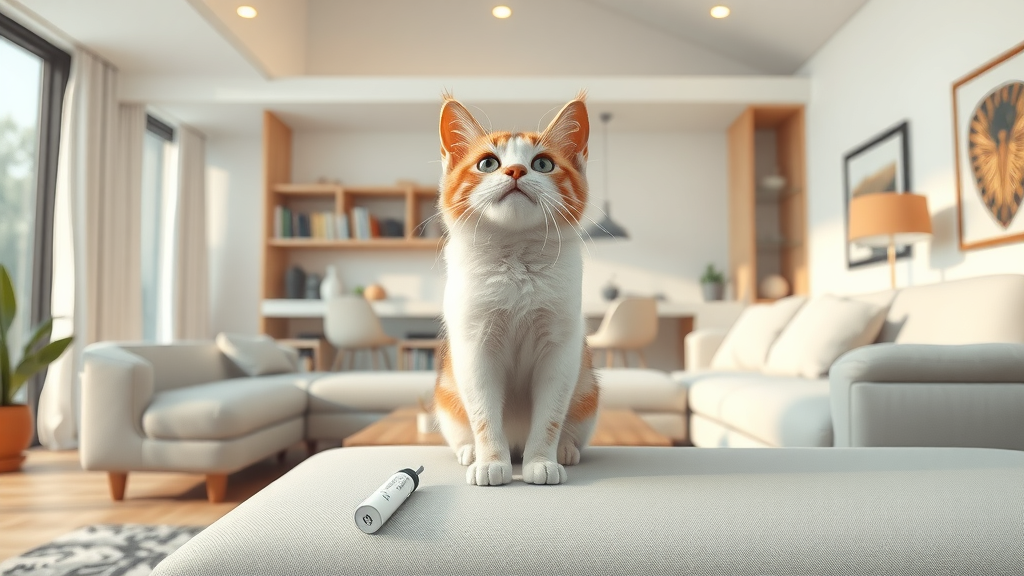
Best Products: Lint rollers, high-powered vacuums, sticky furniture pads, air purifiers.
Home Hacks: Place washable blankets on couches, change filters often, use anti-static sprays, groom cats in a contained space for easy cleanup.
Quick Recap: Important Takeaways on Why Is My Cat Shedding So Much?
Recognize the difference between normal and excessive shedding
Monitor your cat’s skin and behavior for red flags
Adopt proven solutions: regular grooming, dietary improvements, and stress reduction
Consult your vet when in doubt—it pays to catch health issues early
Want More Advice on Cat Shedding? Stay Ahead of Your Cat's Wellness Needs
Caring for your pet just got easier. Get expert advice, product tips, and pet wellness updates delivered monthly. 🐾 Sign up today and stay one paw ahead.
Conclusion: Prioritize grooming, nutrition, and regular vet checks to reduce cat shedding and keep your home—and your cat—happy and healthy.
To further enhance your understanding of why your cat may be shedding excessively and how to manage it, consider exploring the following resources:
“Excessive Shedding in Cats” by Hill’s Pet provides insights into common causes of increased shedding, such as low-quality food, health issues, and stress, along with practical solutions to address them. ( hillspet.com )
“Cat Shedding: Why is Your Cat Shedding So Much?” by Purina US delves into factors like seasonal changes, breed differences, and stress that influence shedding, offering guidance on when to consult a veterinarian. ( purina.com )
These articles offer comprehensive information to help you identify potential causes of your cat’s shedding and implement effective strategies to manage it.
 Add Row
Add Row  Add
Add 



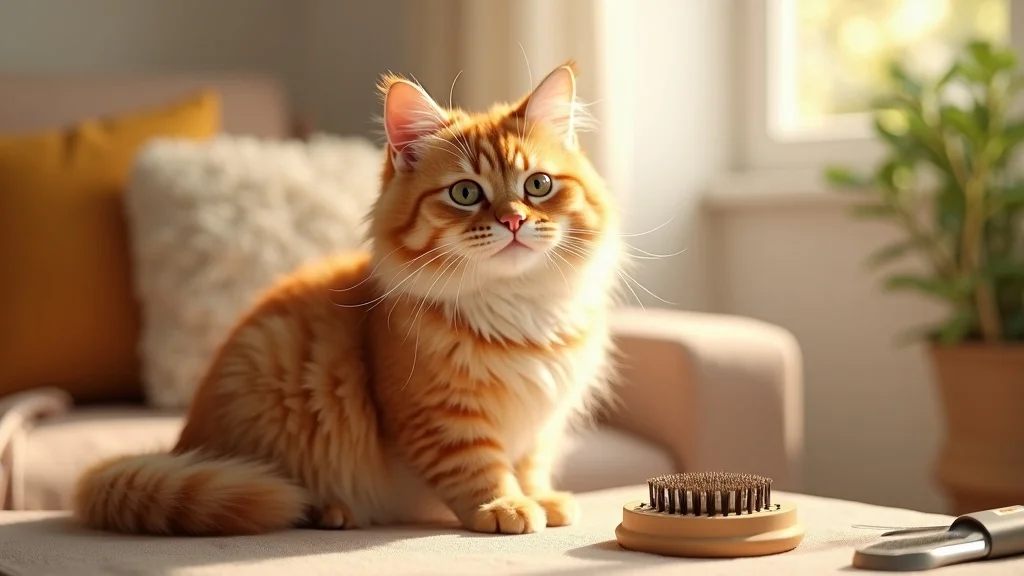
Write A Comment